Papers by Timmis Maddox
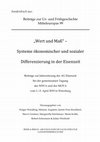
„Wert und Maß“ – Systeme ökonomischer und sozialer Differenzierung in der Eisenzeit Beiträge zur Jahressitzung der AG Eisenzeit bei der gemeinsamen Tagung des WSVA und des MOVA vom 1.–5. April 2019 in Würzburg, 2022
The cultural landscape of pre-Christian Scandinavia has become increasingly accessible to study. ... more The cultural landscape of pre-Christian Scandinavia has become increasingly accessible to study. This is due to the discovery of large
prehistoric settlements such as Sorte Muld and Uppåkra. Yet despite the opportunity which these sites represent, interpretation remains limited. This is reflected by their varying interpretive terminology, which is summarily lumped under the overarching term of ‘central places’.
Some researchers argue for administrative, economic, and social definitions of centrality for the Scandinavian ‘central places’. While a central place need not be limited to one form of centrality, these arguments represent a limited understanding of the core aspects of these sites. Urban definitions are also an issue. Using the neutral term ‘focal settlement’ this paper evaluates research into the Scandinavian ‘central places’. By reviewing interpretation of the Scandinavian focal settlements and juxtaposing them with the Late La Tène oppida and Early Medieval emporia, this study establishes them as urban centers serving a socio-administrative centrality.

From Heroes to Soldiers: How Prehistoric Scandinavian Warfare Reflects Developing Socio-Political Organization
Artifacts, Bones, Discourse, 2020
The Middle to Later Bronze Ages (1100-500 BC) of southern Scandinavia are characterized as a time... more The Middle to Later Bronze Ages (1100-500 BC) of southern Scandinavia are characterized as a time of individuality. It is during this period that kinship-based chiefdoms used an emerging warrior aristocracy to compete over territory and resources. While the warriors serving these institutions ultimately worked to sustain the reputation of their own clan and kin, examinations of the archaeological evidence show that they also fought to advance their own interests—particularly that of accruing honor and reputation. This is reflected by the ritual organization of warfare during this period, where one-on-one duels and small skirmishes between individuals were common and sought after. Yet by the Iron Age (AD 1-750), the organization of combat underwent dramatic change, with large uniform armies emerging to fight large-scale battles. How does such a shift from an emphasis on individual glory to that of collective victory reflect social changes in southern Scandinavia? The following paper presents an in-depth analysis of the development of prehistoric Scandinavian warfare, paying particular attention to how social identity was reflected by its changing organization. In doing so, it establishes that as prehistoric Scandinavian communities became increasingly integrated, groups/individuals may have begun to identify themselves based on relationships with the people around them—a notion which translated into a more structured organization of warfare where combatants served as professional soldiers who fought for the benefit of their community.
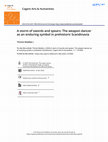
Cogent Arts and Humanities, 2020
The past fifteen years have witnessed increasing effort to study and understand the belief system... more The past fifteen years have witnessed increasing effort to study and understand the belief system of Bronze Age Scandinavia. Different forms of material culture—including rock art and metalwork—and allusions to texts such as the Vedic Rig Veda, have led many to suggest the existence of a shared belief system with an Indo-European solar focus. Yet certain symbols attributed to this Indo-European system seem to have striking parallels in later Norse religious iconography—symbols such as weapon dancer imagery. Several examples of Bronze Age rock art display scenes of weapon-bearing figures, performing ritualistic motions that some have interpreted as dancing. Could this represent a case of prehistoric continuity? By presenting and comparing the Iron and Bronze Age evidence, this paper suggests a possible continuity in representations of warrior rituals on figurative material, underlining the importance of advertising a warrior identity and mentality in Prehistoric Scandinavian communities. In doing so, it also emphasizes the endurance of Prehistoric Scandinavian symbolic structures overall.
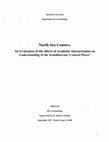
Over the past forty years, the cultural landscape of pre-Christian Scandinavia has become increas... more Over the past forty years, the cultural landscape of pre-Christian Scandinavia has become increasingly accessible, allowing archaeologists to better understand a part of Scandinavian history which had previously depended on unreliable ancient texts. This is due to the discovery of unusually large prehistoric settlements dating to the Late Roman/Germanic Iron Ages (AD 200-AD 800). Yet despite the opportunity which these sites represent, archaeological interpretation has remained limited. This is reflected by their varying interpretations, interpretations which are summarily lumped under the overarching term of ‘central places’. Not only has this made the term ‘central place’ vague, but this use also emphasizes a lack of understanding of how exactly these sites were ‘central’ to wider society. For example, Morten Axboe, Birgitta Hårdh, and Lotte Hedeager respectively argue for administrative, economic, and social definitions of centrality for the Scandinavian ‘central places’. While a central place need not be limited to one form of centrality, these arguments represent a limited understanding of the core aspects which drove these settlements. What elements of these settlements drove their emergence and further development? How were these settlements central in the cultural landscape of Iron Age Scandinavia? Urban definitions are also a constant issue for these sites, as several scholars debate over whether or not these settlements represented examples of urban centers. Using the neutral term ‘focal settlement’ this study evaluates the history of academic research into the Scandinavian ‘central places’. By both investigating how trends in academic interpretation have affected understanding of the focal settlements and then juxtaposing them with both the Late La Téne oppida and the Early Medieval emporia, this study establishes them as urban centers which served a socio-administrative centrality in Iron Age Scandinavia. As settlements which represented prehistoric examples of urbanism for their cultural context, they functioned towards establishing and maintaining elite-driven collective identities, establishing themselves as the first centers of Iron Age Scandinavia. Yet this study also shows that this can only be an interpretation of how these settlements worked generally, as it also establishes that the settlements identified as ‘central places’ or ‘focal settlements’ are too diverse to represent a single settlement type. In conclusion, however, this study establishes that Pre-Christian Scandinavia consisted of highly complex societies which undoubtedly rivaled contemporary examples in Continental Europe.
Conference Presentations by Timmis Maddox


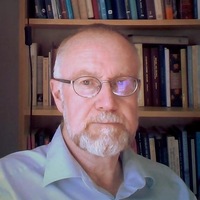

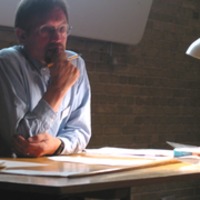






Uploads
Papers by Timmis Maddox
prehistoric settlements such as Sorte Muld and Uppåkra. Yet despite the opportunity which these sites represent, interpretation remains limited. This is reflected by their varying interpretive terminology, which is summarily lumped under the overarching term of ‘central places’.
Some researchers argue for administrative, economic, and social definitions of centrality for the Scandinavian ‘central places’. While a central place need not be limited to one form of centrality, these arguments represent a limited understanding of the core aspects of these sites. Urban definitions are also an issue. Using the neutral term ‘focal settlement’ this paper evaluates research into the Scandinavian ‘central places’. By reviewing interpretation of the Scandinavian focal settlements and juxtaposing them with the Late La Tène oppida and Early Medieval emporia, this study establishes them as urban centers serving a socio-administrative centrality.
Conference Presentations by Timmis Maddox
prehistoric settlements such as Sorte Muld and Uppåkra. Yet despite the opportunity which these sites represent, interpretation remains limited. This is reflected by their varying interpretive terminology, which is summarily lumped under the overarching term of ‘central places’.
Some researchers argue for administrative, economic, and social definitions of centrality for the Scandinavian ‘central places’. While a central place need not be limited to one form of centrality, these arguments represent a limited understanding of the core aspects of these sites. Urban definitions are also an issue. Using the neutral term ‘focal settlement’ this paper evaluates research into the Scandinavian ‘central places’. By reviewing interpretation of the Scandinavian focal settlements and juxtaposing them with the Late La Tène oppida and Early Medieval emporia, this study establishes them as urban centers serving a socio-administrative centrality.